
|
Astronomy Picture Of the Day (APOD)
 A Patch of Spherules on Mars
A Patch of Spherules on Mars
15.02.2004
Some patches of Mars are full of mysterious tiny spherules. The microscopic imager on board the Opportunity rover on Mars recorded, last week, the above image showing over a dozen. The image was taken near a rock outcrop called Stone Mountain and spans roughly 6 centimeters across.
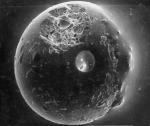 A Spherule from the Earths Moon
A Spherule from the Earths Moon
14.02.2004
How did this spherule come to be on the Moon? When a meteorite strikes the Moon, the energy of the impact melts some of the splattering rock, a fraction of which might cool into tiny glass beads. Many of these glass beads were present in lunar soil samples returned to Earth by the Apollo missions.
13.02.2004
On another Valentine's Day (February 14, 1990), cruising four billion miles from the Sun, the Voyager 1 spacecraft looked back to make this first ever family portrait of our Solar System. The complete portrait is a 60 frame mosaic made from a vantage point 32 degrees above the ecliptic plane.
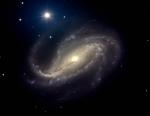 NGC 613: Spiral of Dust and Stars
NGC 613: Spiral of Dust and Stars
12.02.2004
When morning twilight came to the Paranal Observatory in Chile, astronomers Mark Neeser and Peter Barthel interrupted their search for faint quasars, billions of light-years away. And just for a moment, they used Very Large Telescopes at the European Southern Observatory to appreciate the beauty of the nearby Universe.
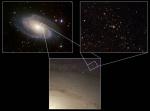 Supernova Survivor
Supernova Survivor
11.02.2004
Beginning with a full view of beautiful spiral galaxy M81, follow the insets (left, bottom, then right) to zoom in on a real survivor. Seen at the center of the final field on the right is a star recently identified as the survivor of a cosmic cataclysm -- the supernova explosion of its companion star.
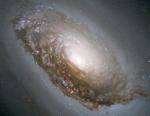 M64: The Sleeping Beauty Galaxy
M64: The Sleeping Beauty Galaxy
10.02.2004
The Sleeping Beauty galaxy may appear peaceful at first sight but it is actually tossing and turning. In an unexpected twist, recent observations have shown that the gas in the outer regions of this photogenic spiral is rotating in the opposite direction from all of the stars!
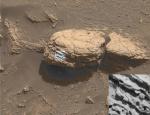 Unusual Spherules on Mars
Unusual Spherules on Mars
9.02.2004
What are those unusual spherules on Mars? The Mars Opportunity rover has now photographed several unusual nodules on Mars that have a nearly spherical shape. Many times these spherules are embedded in larger rock outcroppings but appear grayer.
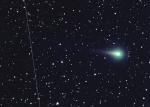 Announcing Comet C 2002 T7 LINEAR
Announcing Comet C 2002 T7 LINEAR
8.02.2004
A newly discovered comet may outshine most stars in the sky by May. Designated Comet C/2002 T7 (LINEAR), the comet was discovered in 2002 October by project LINEAR. Many reports already place the comet as brighter than magnitude 7, meaning that it can now be seen with binoculars.
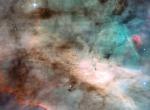 In the Center of the Omega Nebula
In the Center of the Omega Nebula
7.02.2004
In the depths of the dark clouds of dust and molecular gas known as the Omega Nebula, stars continue to form. The above image from the Hubble Space Telescope's Advanced Camera for Surveys shows exquisite detail in the famous star-forming region.
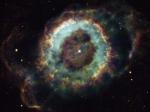 NGC 6369: The Little Ghost Nebula
NGC 6369: The Little Ghost Nebula
6.02.2004
This pretty planetary nebula, cataloged as NGC 6369, was discovered by 18th century astronomer William Herschel as he used a telescope to explore the medicinal constellation Ophiucus. Round and planet-shaped, the nebula is also relatively faint and has acquired the popular moniker of Little Ghost Nebula.
|
January February March April May June July August September October November December |
||||||||||||||||||||||||||||||||||||||||||||||||||||||||